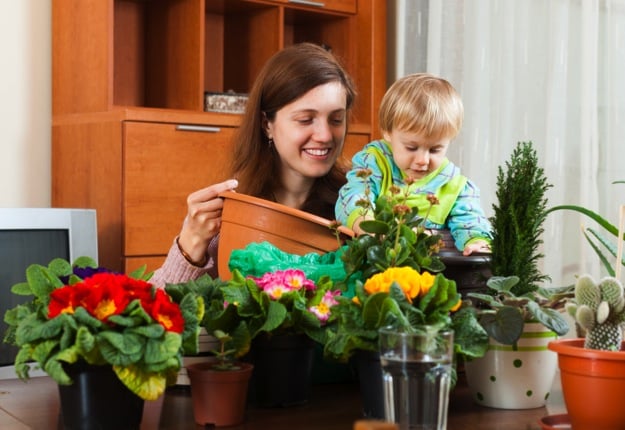Both new and old homes can harbour invisible toxins. These chemical emissions can be found in off-gassing from building materials, plastics, paint, carpet and cleaning solutions. Luckily, nature has an excellent method of keeping your environment clean.
There are certain plants that are powerful air cleaners and will naturally remove pollutants from the air of your home.
You no longer have to live in unhealthy conditions if you make a point of getting some of these air cleaning plants for your home.
Five plants that you can trust to make air healthier for your family are:
1. Peace Lily (Spathiphyllum)
In the 1980s, it was discovered that peace lilies absorb formaldehyde, trichloroethylene, formaldehyde and other toxins. To maximise its air cleaning potential, always keep dust away from the foliage. Peace lily grows well in both bright and low lights. Low-light conditions, however, slow down flower production.
This plant requires the application of all-purpose liquid fertiliser during spring and summer. Also, you should keep the soil slightly moist for it to bloom.
2. Florist’s Chrysanthemum (Chrysanthemum morifolium)
Commonly referred to as mum, this is one of the best air purifiers in Australia. It helps to eliminate formaldehyde, xylene ammonia and benzene. Technically, it is not considered a houseplant because it is a seasonal beauty flower.
With proper care, it grows for six weeks. After it withers, throw it into a composite pile then get yourself a fresh pot. Florist’s Chrysanthemum will last longer if you place it in bright but indirect light. Remember to check the soil moisture every day and ensure that it stays damp. It does not require fertiliser because the flower cannot re-bloom.
3. Aloe Vera
The good old Aloe Vera not only has many therapeutic properties, but has also been proven to be an effective air purifier. It eliminates formaldehyde at lesser concentration.
4. Bamboo Palm
Bamboo Palm is a natural, elegant and sturdy plant apt for winter months since it will grow to between three and six feet tall while transpiring a healthy amount of moisture into your rooms.
This plant helps to eliminate formaldehyde, carbon monoxide, benzene, and chloroform, among others.
Bamboo palms have high transpiration rate, therefore, will pump lots of moisture back into your indoor atmospheres. Do not place it in direct sunlight. Feed the plant monthly with all purpose liquid fertiliser during summer and keep the soil in a moist condition. Place your plant in a location where air will circulate freely and mist frequently to deter spider mites.
5. Ivy
This is a climbing plant that adapts perfectly to indoor conditions and is an excellent choice for an evergreen plant.
It helps to make the air in your rooms healthier by eliminating carbon monoxide, benzene, trichloroethylene, and formaldehyde. English Ivy is also recommended for removal of allergens like animal faeces and mould.
This plant is an excellent houseplant since it does not require much space, it is perfectly happy growing in hanging containers or baskets.
You can also use it to enhance your home’s appearance; use green leaved varieties for providing contrast against light surroundings and variegated forms for brightening up dark corners.
For English Ivy to flourish, plant green-leaved varieties in a spot where there is low or indirect light. Variegated forms require bright but indirect light. Water the plant generously during growth and keep the compost moist during winter. Apply balanced liquid fertiliser each month.
There are many toxins in your house that you just cannot see. Beautify your home and improve air quality at the same time by simply planting houseplants, and let your family enjoy a healthier home.
Do you have any other plant suggestions to add to this list? Please share in the comments below.






















9:16 pm
9:23 am
10:32 pm
10:20 pm
4:03 pm
12:13 am
1:13 pm
4:58 pm
2:53 pm
5:59 am
11:50 pm
8:29 pm
10:04 pm
5:55 pm
10:22 pm
4:41 pm
9:44 am
6:44 pm
-

-
-
mom81333 replied
- 26 Sep 2015 , 5:00 pm
Reply4:59 pm
5:51 pm
- 1
- 2
- »
Post a commentTo post a review/comment please join us or login so we can allocate your points.